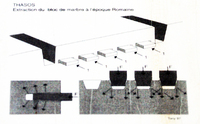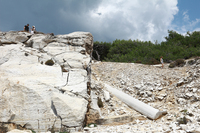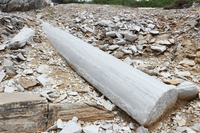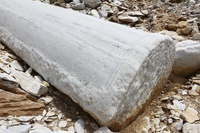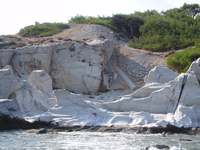Quarrying techniques during the Roman era
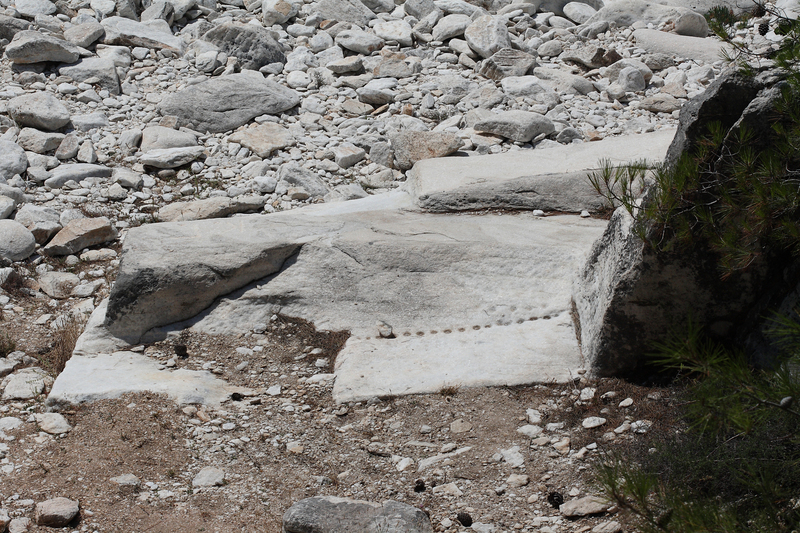

At low levels of the quarry area, at various points of the quarries of group B, traces of the tools, which were used for the extraction of marble, are visible. Throughout antiquity, the quarry workers were able to dislodge large marble blocks, with geometric precision using wedges, sledgehammer, ax and spear, named respectively in ancient times, wedges, heavies, tikos and needles.
Quarrying techniques during the Roman era
At the given drawing, the quarrying technique, which was used during the Roman period, is visible. The tools which were used are: hammer and wide wedges, for the drilling and the detachment of marble bulks. At that time the Thassian marble became known and was in great demand throughout the Roman Empire and often decorates public buildings, monuments and mansions of prominent Roman citizens.
Unfinished monolithic column
Perhaps, looking from above, we cannot realize the height and the volume of this incomplete, monolithic column, which today, although it is half-covered with waste from the quarries, reveals the skills of the craftsmen of that time, who were able to create ornate marble objects, although they had a few tools at their disposal. What did it go wrong, and the column was left forever buried? We might never know.
Looking closely at the column, we realize its size and volume. It is of nine meters height, like the height of a current, three-storey building. It is not known, for which port or which place was intended. But it is certain, that it was made to decorate an important building of the time. It is possible that it was intended for Rome, since the Romans had a high regard for the Thassian marble. It has been found that in the early Christian times, the marble of Alyki was exported to Greece (Thessaloniki, Aegina), Asia Minor (Pergamon, Sardis, Efesos), Italy (Ostia, Rome, Akouliia) and Syria (Antioch). Although it was found in the waste of a quarry of Group B, on the east coast of the peninsula, archaeologists believe that it was probably carved in the quarry A11, which is located in the interior of the peninsula.
A closer look allows the visitor to notice that the final polishing of the largest part of the surface of the column, took place in the mining area. It was an important activity, which involved the removal of the unnecessary volume of the marble, which would cause greater load and of course additional difficulty in its transportation and its loading aboard. Only one strip was left rough and crude, probably to protect the column, during its transportation, while we can observe that it bears a Masonic symbol.
If we observe the area from the side of the sea, we clearly see the vertical marble mining fronts. However, as time passed by, the waves of the sea have smoothed the remaining marbles, but also the fierce, southern wind has deformed vegetation.


